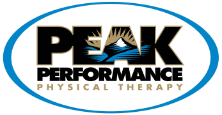Improved Results with Guided Injections into the Achilles Tendon
One-third of all orthopedic doctors use steroid injections to treat Achilles tendonitis. The dangers of steroid injections are still questioned by many other doctors. Researchers at the University of Virginia Health System did a safety study of low-volume steroid injections. They used a special imaging method called fluoroscopy to guide the injection to the right spot.
All of the 43 patients had Achilles tendonitis that didn't get better with regular treatment. After injection everyone was followed for at least two years. The patients were asked to report any problems after the injection. Problems included minor complaints, such as changes in skin color, infection, or skin thinning.
Major problems such as tendon rupture and deep infection were also reported. Other signs of success or failure were measured by patient response. Everyone was asked how much pain relief they got and how long it lasted. They were asked if a second injection was needed. The authors report that 40 percent of the patients got better. More than half thought there was no change. A smaller number (seven percent) reported getting worse.
The authors conclude that the method of delivering the steroid is a key factor in success. Using fluoroscopy reduced the chance of adhesions between the tendon and its lining. There was no proof in this study that properly applied steroid injections cause tendon rupture.
Sanjitpal S. Gill, MD, et al. Fluoroscopically Guided Low-Volume Peritendinous Corticosteroid Injection for Achilles Tendinopathy: A Safety Study. In The Journal of Bone and Joint Surgery. April 2004. Vol. 86-A. No. 4. Pp.802-806.